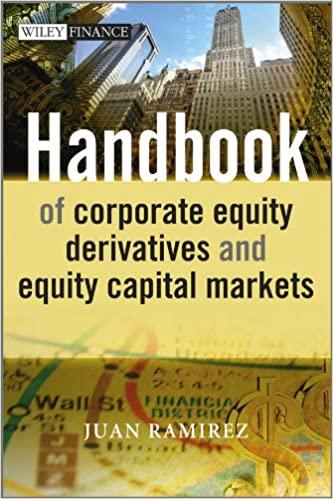Answered step by step
Verified Expert Solution
Question
1 Approved Answer
hensive/Spreadsheet Problem 5-41 TIME VALUE OF MONEY Answer the following questions: b. What is the investment's FV at rates of 0%, 5%, and 20% after


hensive/Spreadsheet Problem 5-41 TIME VALUE OF MONEY Answer the following questions: b. What is the investment's FV at rates of 0%, 5%, and 20% after 0, 1, 2, 3, 4, and 5 years? a. Assuming a rate of 10% annually, find the FV of $1,000 after 5 years. c. Find the PV of $1,000 due in 5 years if the discount rate is 10%. d. What is the rate of return on a security that costs $1,000 and returns $2,000 after 5 years? e. Suppose California's population is 40 million people and its population is expected to grow by 2% annually. How long will it take for the population to double? f. Find the PV of an ordinary annuity that pays $1,000 each of the next 5 years if the interest rate is 15%. What is the annuity's FV? g. How will the PV and FV of the annuity in part f change if it is an annuity due? h. What will the FV and the PV be for $1,000 due in 5 years if the interest rate is 10%, semiannual compounding? i. What will the annual payments be for an ordinary annuity for 10 years with a PV of $1,000 if the interest rate is 8%? What will the payments be if this is an annuity due? Find the PV and the FV of an investment that pays 8% annually and makes the following end-of-year payments: j. 0 1 2 3 $100 $200 $400 k. Five banks offer nominal rates of 6% on deposits, but A pays interest annually, B pays semiannually, C pays quarterly, D pays monthly, and E daily. 1. What effective annual rate does each bank pay? If you deposit $5,000 in each bank today, how much will you have in each bank at the end of 1 year? 2 years? 2. If all of the banks are insured by the government (the FDIC) and thus are equally risky, will they be equally able to attract funds? If not (and the TVM is the only hensive/Spreadsheet Problem 5-41 TIME VALUE OF MONEY Answer the following questions: b. What is the investment's FV at rates of 0%, 5%, and 20% after 0, 1, 2, 3, 4, and 5 years? a. Assuming a rate of 10% annually, find the FV of $1,000 after 5 years. c. Find the PV of $1,000 due in 5 years if the discount rate is 10%. d. What is the rate of return on a security that costs $1,000 and returns $2,000 after 5 years? e. Suppose California's population is 40 million people and its population is expected to grow by 2% annually. How long will it take for the population to double? f. Find the PV of an ordinary annuity that pays $1,000 each of the next 5 years if the interest rate is 15%. What is the annuity's FV? g. How will the PV and FV of the annuity in part f change if it is an annuity due? h. What will the FV and the PV be for $1,000 due in 5 years if the interest rate is 10%, semiannual compounding? i. What will the annual payments be for an ordinary annuity for 10 years with a PV of $1,000 if the interest rate is 8%? What will the payments be if this is an annuity due? Find the PV and the FV of an investment that pays 8% annually and makes the following end-of-year payments: j. 0 1 2 3 $100 $200 $400 k. Five banks offer nominal rates of 6% on deposits, but A pays interest annually, B pays semiannually, C pays quarterly, D pays monthly, and E daily. 1. What effective annual rate does each bank pay? If you deposit $5,000 in each bank today, how much will you have in each bank at the end of 1 year? 2 years? 2. If all of the banks are insured by the government (the FDIC) and thus are equally risky, will they be equally able to attract funds? If not (and the TVM is the only
Step by Step Solution
There are 3 Steps involved in it
Step: 1

Get Instant Access to Expert-Tailored Solutions
See step-by-step solutions with expert insights and AI powered tools for academic success
Step: 2

Step: 3

Ace Your Homework with AI
Get the answers you need in no time with our AI-driven, step-by-step assistance
Get Started


